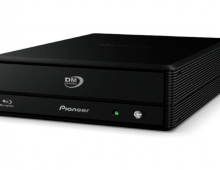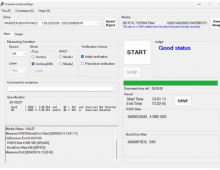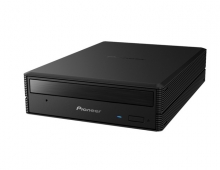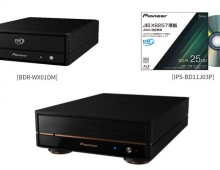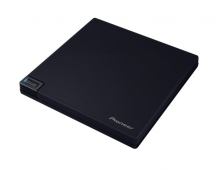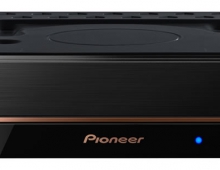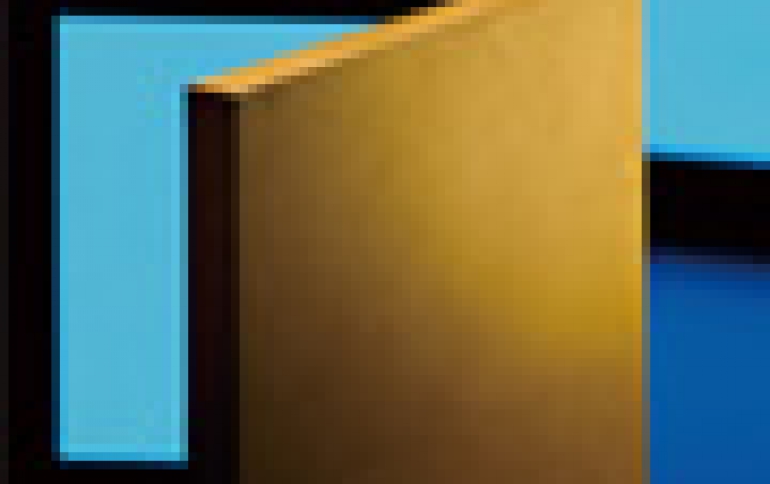
Mitsubishi Chemical and Pioneer Join Forces On Organic Light Emitting Diode (OLED) Lighting
Mitsubishi Chemical Corporation and Pioneer Corporation have entered into an alliance on their organic OLED Lighting business as well as capital alliance strengthening their company relations.
Mitsubishi Chemical has decided to enter the OLED Lighting business, and is aiming to begin full-scale mass production and launch in 2011. Target sales for the OLED Lighting business are 30 billion Japanese yen for 2015, and 100 billion Japanese yen for 2020.
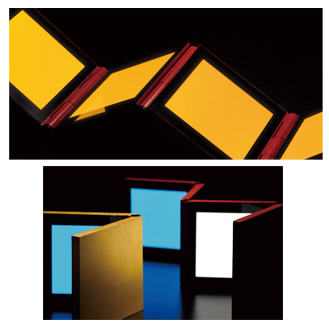
With this business move, Mitsubishi Chemical will use OLED Lighting panels supplied by Pioneer. It is also looking into performing joint research on printable OLED Lighting development, as well as their commercialization.
Both companies are currently performing joint research on OLED Lighting panels that use printable hole injecting material (HIM) and new emitting materials . In line with its goal to start early mass production and marketing of new printable emitting materials, Mitsubishi Chemical is moving on with research and development, as well as looking into the commercialization of printable OLED Lighting.
OLED Lighting does not create a spot of light or strip of light like electric bulbs and fluorescent lights, the whole body emits light in a way that is easy on the eyes. Brightness and color can be freely controlled (dimness/tone), it can be made transparent (can see through to the other side like a glass window), and it can be made flexible (light surface can be flat or curved, shapes can be freely formed). Also, the fact that it does not use mercury and uses low amounts of energy makes it an environmental-friendly next-generation lighting that is receiving high expectations.
Currently, OLED Lighting panels are commonly created through a vapor deposition process, which makes it difficult to mass-produce no-defects, large, uniform surfaces. However, Mitsubishi Chemical's printable materials realize the mass production of the world's largest class of lighting area, about 14cm square, with Pioneer's commercial lines.
Mitsubishi Chemical will be supplied OLED Lighting panels by Pioneer, then launch illumination appliances that make use of the benefits of OLED across Verbatim's worldwide sales network starting in 2011. Verbatim, a Mitsubishi Chemical company, will sell the first LED lighting products in Europe later this year.
 Verbatim is also expecting to market lamps with a near-daylight colour rendering index (CRI) of 98 during 2011. Initially, the company plans to sell lamps with many of the most common shapes and base fittings including A-lamps, candle lamps and directional MR16s, with a choice of E14, E27, GU5.3 and GU10 bases to follow later. The products will be suitable for direct replacement of incandescent and halogen lamps. Typical energy savings will be 80%, compared with conventional lighting, and the products will have much longer life of around 35,000 hours, equivalent to 10 years at 10 hours per day, depending on operating conditions, Verbatim claims. The first family of lamps will be based on a blue light-emitting chip LED technology. They will be competitively priced, available in cool and warm white, and have a typical colour rendering index (CRI) similar to that of other products currently in the market. The next generation of lamps, planned for 2011, will use a violet light emitting chip with red, green and blue phosphors. These products, also in warm white, will offer further improvements in CRI with a typical average value of 98. This is very close to natural light.
Also in relation to Mitsubishi Chemical's OLED illumination appliances, the company plans to display the world's first dimmable/tone adjustable prototype this year from April 11th - 16th in Frankfurt, Germany at Light+Building 2010, the world's largest international lighting exhibition.
Verbatim is also expecting to market lamps with a near-daylight colour rendering index (CRI) of 98 during 2011. Initially, the company plans to sell lamps with many of the most common shapes and base fittings including A-lamps, candle lamps and directional MR16s, with a choice of E14, E27, GU5.3 and GU10 bases to follow later. The products will be suitable for direct replacement of incandescent and halogen lamps. Typical energy savings will be 80%, compared with conventional lighting, and the products will have much longer life of around 35,000 hours, equivalent to 10 years at 10 hours per day, depending on operating conditions, Verbatim claims. The first family of lamps will be based on a blue light-emitting chip LED technology. They will be competitively priced, available in cool and warm white, and have a typical colour rendering index (CRI) similar to that of other products currently in the market. The next generation of lamps, planned for 2011, will use a violet light emitting chip with red, green and blue phosphors. These products, also in warm white, will offer further improvements in CRI with a typical average value of 98. This is very close to natural light.
Also in relation to Mitsubishi Chemical's OLED illumination appliances, the company plans to display the world's first dimmable/tone adjustable prototype this year from April 11th - 16th in Frankfurt, Germany at Light+Building 2010, the world's largest international lighting exhibition.
Both Mitsubichi Chemical and Pioneer are also continuing their joint research on OLED Lighting panels not only printable HIM, but also new printable emitting materials. These new printable materials enables a emitting layer to be low-cost application process that has achieved a characteristic illumination life time (the time it takes for the brightness to reduce to 70% of its starting value) of 10,000 hours in the laboratory.

With this business move, Mitsubishi Chemical will use OLED Lighting panels supplied by Pioneer. It is also looking into performing joint research on printable OLED Lighting development, as well as their commercialization.
Both companies are currently performing joint research on OLED Lighting panels that use printable hole injecting material (HIM) and new emitting materials . In line with its goal to start early mass production and marketing of new printable emitting materials, Mitsubishi Chemical is moving on with research and development, as well as looking into the commercialization of printable OLED Lighting.
OLED Lighting does not create a spot of light or strip of light like electric bulbs and fluorescent lights, the whole body emits light in a way that is easy on the eyes. Brightness and color can be freely controlled (dimness/tone), it can be made transparent (can see through to the other side like a glass window), and it can be made flexible (light surface can be flat or curved, shapes can be freely formed). Also, the fact that it does not use mercury and uses low amounts of energy makes it an environmental-friendly next-generation lighting that is receiving high expectations.
Currently, OLED Lighting panels are commonly created through a vapor deposition process, which makes it difficult to mass-produce no-defects, large, uniform surfaces. However, Mitsubishi Chemical's printable materials realize the mass production of the world's largest class of lighting area, about 14cm square, with Pioneer's commercial lines.
Mitsubishi Chemical will be supplied OLED Lighting panels by Pioneer, then launch illumination appliances that make use of the benefits of OLED across Verbatim's worldwide sales network starting in 2011. Verbatim, a Mitsubishi Chemical company, will sell the first LED lighting products in Europe later this year.
 Verbatim is also expecting to market lamps with a near-daylight colour rendering index (CRI) of 98 during 2011. Initially, the company plans to sell lamps with many of the most common shapes and base fittings including A-lamps, candle lamps and directional MR16s, with a choice of E14, E27, GU5.3 and GU10 bases to follow later. The products will be suitable for direct replacement of incandescent and halogen lamps. Typical energy savings will be 80%, compared with conventional lighting, and the products will have much longer life of around 35,000 hours, equivalent to 10 years at 10 hours per day, depending on operating conditions, Verbatim claims. The first family of lamps will be based on a blue light-emitting chip LED technology. They will be competitively priced, available in cool and warm white, and have a typical colour rendering index (CRI) similar to that of other products currently in the market. The next generation of lamps, planned for 2011, will use a violet light emitting chip with red, green and blue phosphors. These products, also in warm white, will offer further improvements in CRI with a typical average value of 98. This is very close to natural light.
Also in relation to Mitsubishi Chemical's OLED illumination appliances, the company plans to display the world's first dimmable/tone adjustable prototype this year from April 11th - 16th in Frankfurt, Germany at Light+Building 2010, the world's largest international lighting exhibition.
Verbatim is also expecting to market lamps with a near-daylight colour rendering index (CRI) of 98 during 2011. Initially, the company plans to sell lamps with many of the most common shapes and base fittings including A-lamps, candle lamps and directional MR16s, with a choice of E14, E27, GU5.3 and GU10 bases to follow later. The products will be suitable for direct replacement of incandescent and halogen lamps. Typical energy savings will be 80%, compared with conventional lighting, and the products will have much longer life of around 35,000 hours, equivalent to 10 years at 10 hours per day, depending on operating conditions, Verbatim claims. The first family of lamps will be based on a blue light-emitting chip LED technology. They will be competitively priced, available in cool and warm white, and have a typical colour rendering index (CRI) similar to that of other products currently in the market. The next generation of lamps, planned for 2011, will use a violet light emitting chip with red, green and blue phosphors. These products, also in warm white, will offer further improvements in CRI with a typical average value of 98. This is very close to natural light.
Also in relation to Mitsubishi Chemical's OLED illumination appliances, the company plans to display the world's first dimmable/tone adjustable prototype this year from April 11th - 16th in Frankfurt, Germany at Light+Building 2010, the world's largest international lighting exhibition.
Both Mitsubichi Chemical and Pioneer are also continuing their joint research on OLED Lighting panels not only printable HIM, but also new printable emitting materials. These new printable materials enables a emitting layer to be low-cost application process that has achieved a characteristic illumination life time (the time it takes for the brightness to reduce to 70% of its starting value) of 10,000 hours in the laboratory.

